Want to know how to connect Facebook to Google Analytics to track visitors from Facebook?
By setting up Google Analytics to track Facebook, you can see how many people come to your site from Facebook, how long they stay, which pages they visit, and other details. Plus, if you run ads on Facebook (Meta Ads), you can see if those ads effectively convert users.
In this article, we’ll show you how to easily track website traffic and ad conversions from Facebook using Google Analytics. We’ll also cover different ways to connect Facebook, your website, and Google Analytics to each other.
Why Connect Facebook to Google Analytics?
Connecting Google Analytics to Facebook lets you track what users do on your website after they click a link from Facebook.
With over 2 billion daily users, Facebook is a key platform for attracting an audience. However, because Facebook now prioritizes posts from family and friends, it has become more challenging to reach your target audience. Therefore, it is essential to track how users behave on your website after coming from Facebook to leverage the platform’s reach fully.
This data complements the insights Facebook already provides, such as user interactions on your page. Facebook Insights shows you data about your activity on Facebook, including:
- Reach
- Page likes
- Demographics of your followers
- Interactions
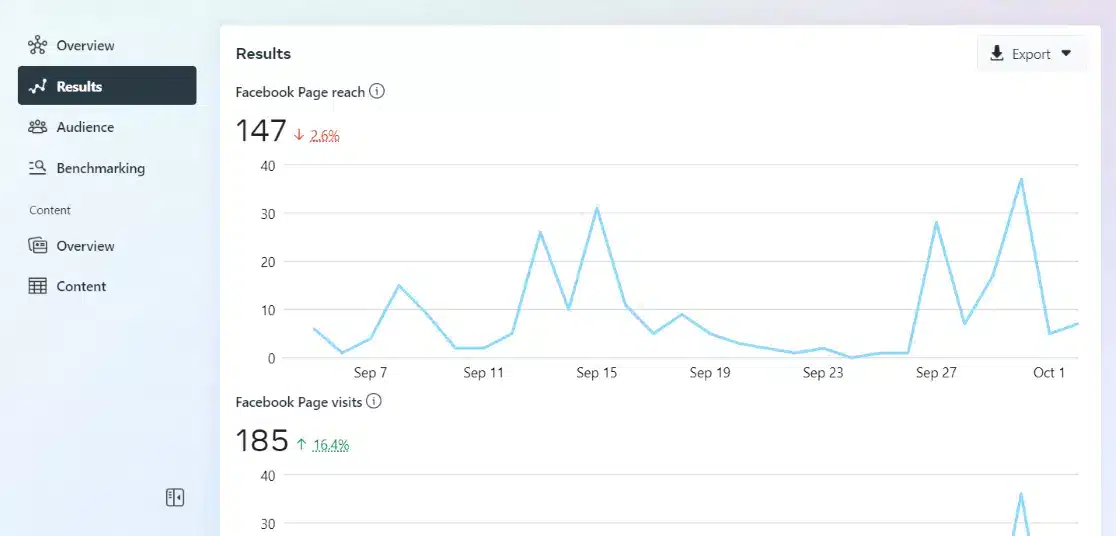
But what happens after someone from Facebook visits your website? Without this data, you can’t fully understand if your marketing efforts are successful.
That’s why you need to connect Facebook to Google Analytics to track users’ activities on your website.
How to Connect Facebook to Google Analytics
If you don’t have Google Analytics yet, you’ll need to set it up first. Follow our guide if you need help.
Using WordPress? The easiest way to connect Facebook, WordPress, and Google Analytics is by using ExactMetrics.
ExactMetrics is the best Google Analytics plugin for WordPress. It lets you easily connect your WordPress site with Google Analytics (and Facebook) to view all vital data right inside your WordPress dashboard.
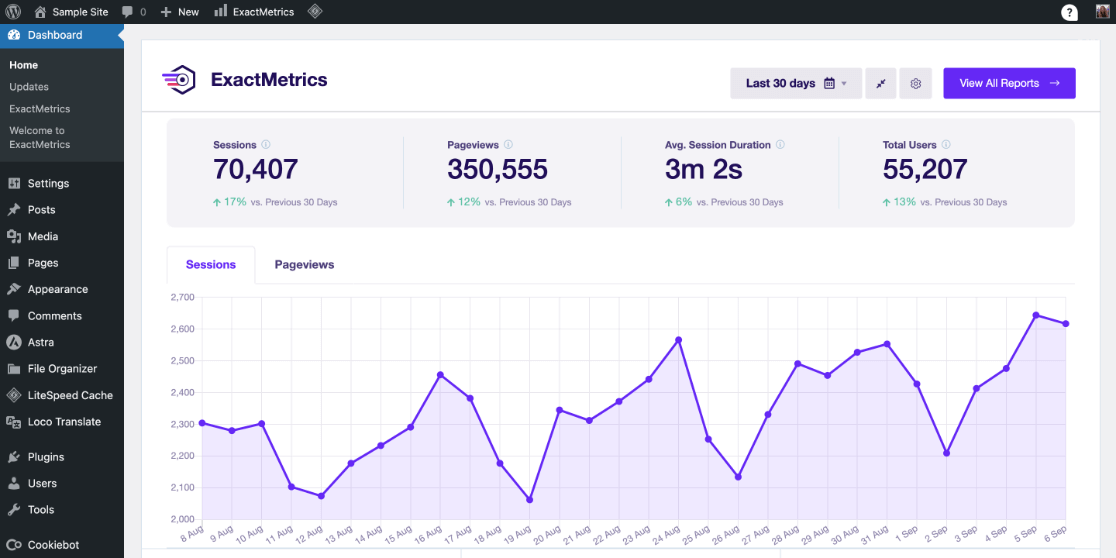
With a few clicks, you can set up additional tracking features that aren’t included in Google Analytics by default, such as event tracking, eCommerce tracking, form tracking, custom dimension tracking, outbound link tracking, and more.
Using ExactMetrics Plus or above, you’ll see your Facebook traffic directly inside your WordPress dashboard:
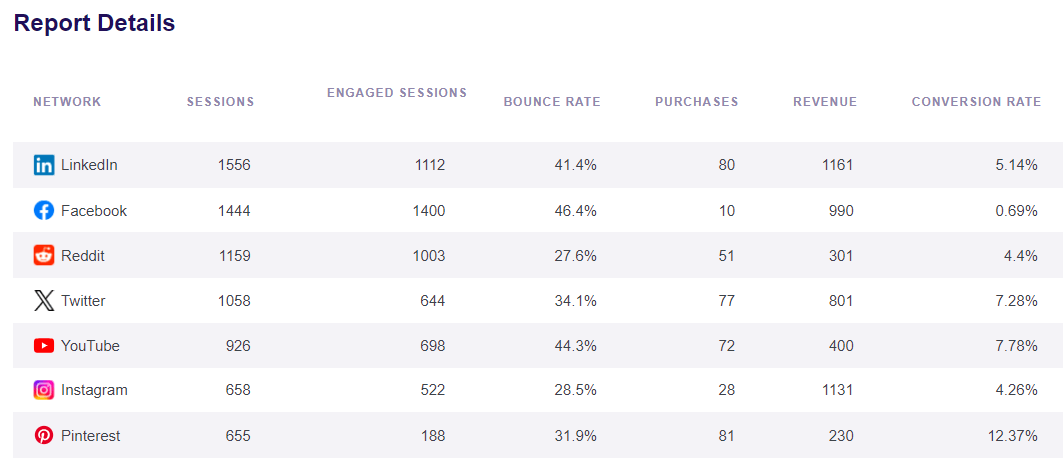
You can also add the Facebook (Meta) pixel without any coding:

Get started with ExactMetrics now!
Once Google Analytics is set up, it automatically tracks all your Facebook traffic. However, there are a few additional steps if you need to track Facebook ads.
Let’s begin by exploring how to identify and report your organic Facebook traffic in Google Analytics.
Tracking Website Traffic from Facebook
Google Analytics tracks your Facebook traffic, but how do you find it in your reports?
1. Finding Facebook Traffic in Google Analytics
To easily track Facebook traffic on your website, you can utilize the Traffic Acquisition report in Google Analytics.
GA4 Traffic Acquisition Report
Begin by navigating to the Reports section, then proceed to Acquisition and select Traffic acquisition:
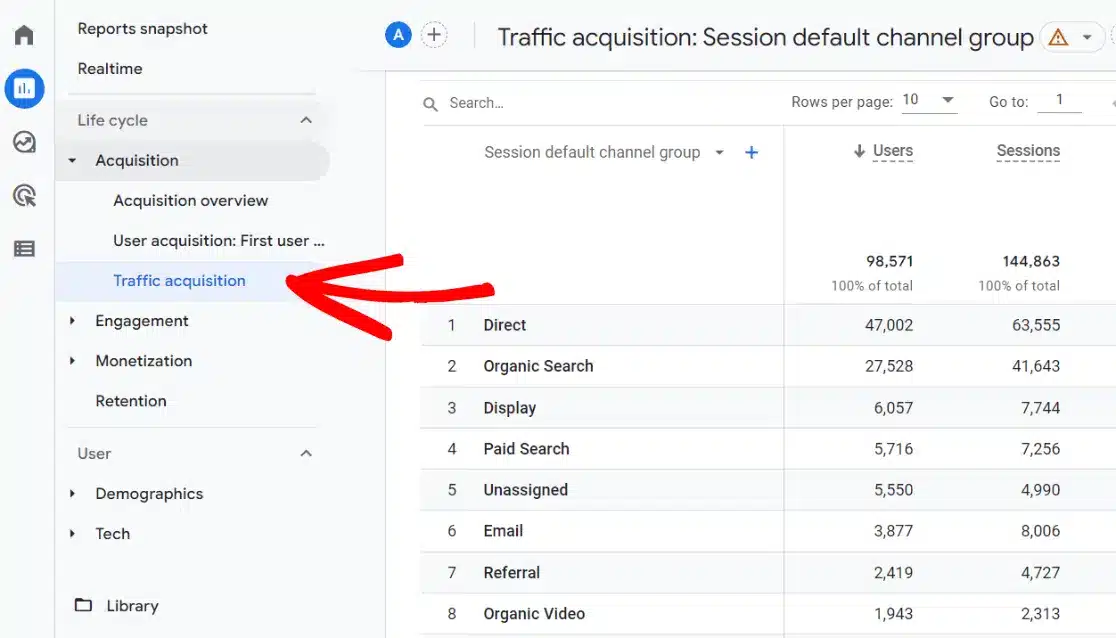
Once there, scroll down to the table that lists various traffic channels.
Look for Organic Social, which encompasses traffic from all social media platforms, including Facebook.
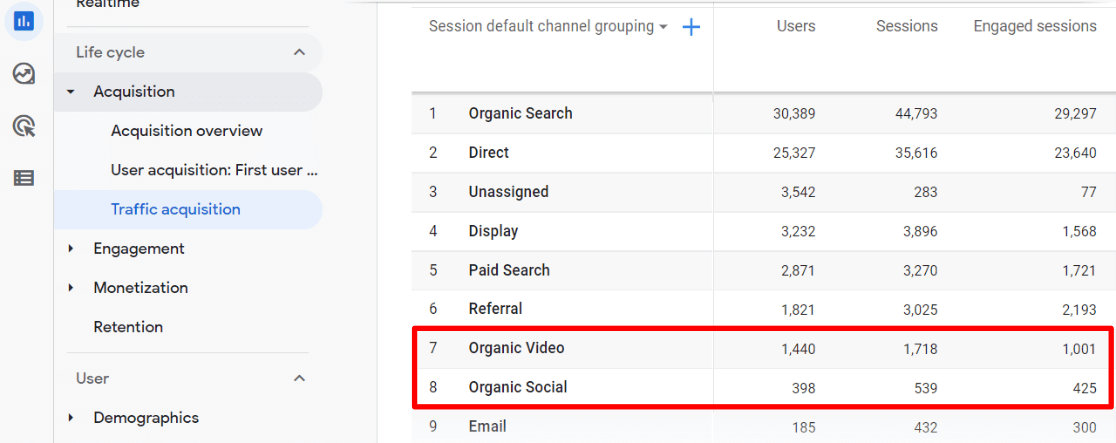
To specifically filter for Facebook traffic, click the blue plus sign to add a secondary dimension.
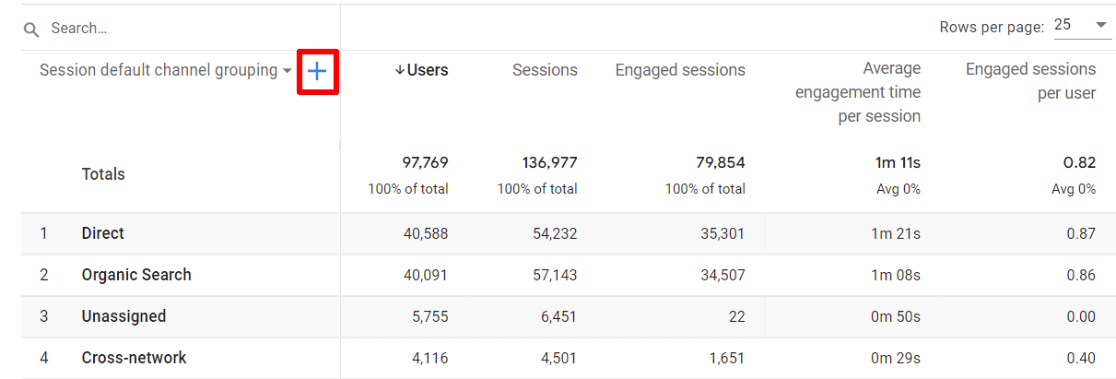
Choose Traffic Source and then select Session source:
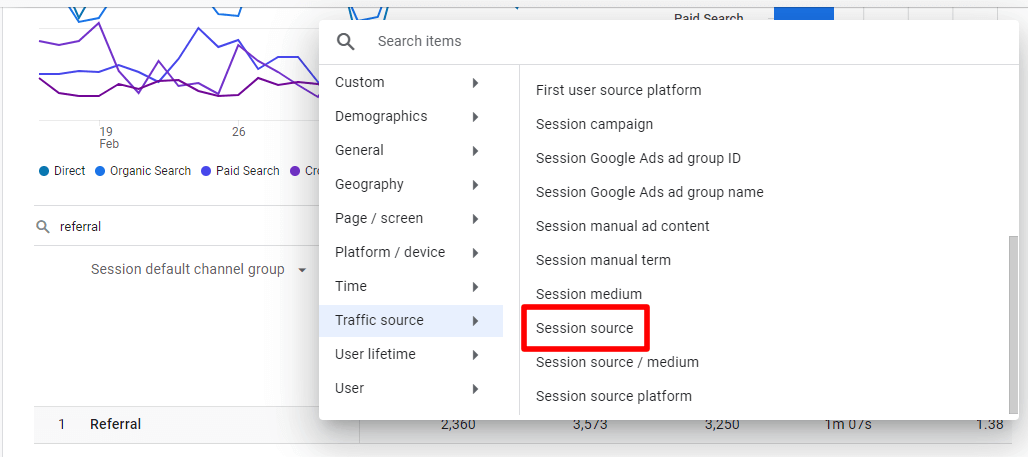
In the search bar that appears, type “facebook”:
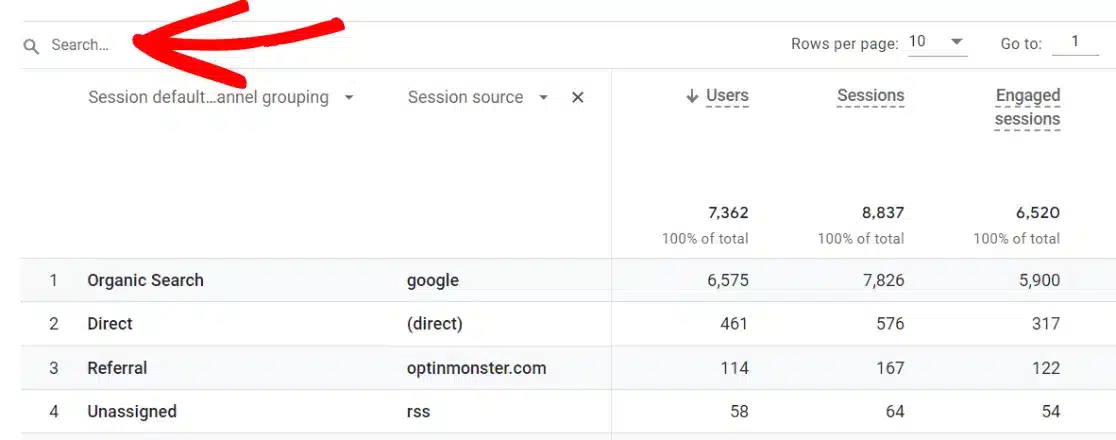
This action will filter the report, displaying only traffic that comes from Facebook, giving you a clear view of how users are interacting with your site after coming from the social media platform.

Using WordPress with ExactMetrics? Easily find your Facebook traffic directly inside your WordPress dashboard with the Social Media report:
Google Analytics Custom Facebook Report
Creating a custom Facebook Google Analytics report may initially seem daunting. Still, with these steps, you can craft a detailed Facebook traffic report that you can return to and reuse.
Start by opening GA4 and navigating to the Explore tab, where you’ll create a Blank report.
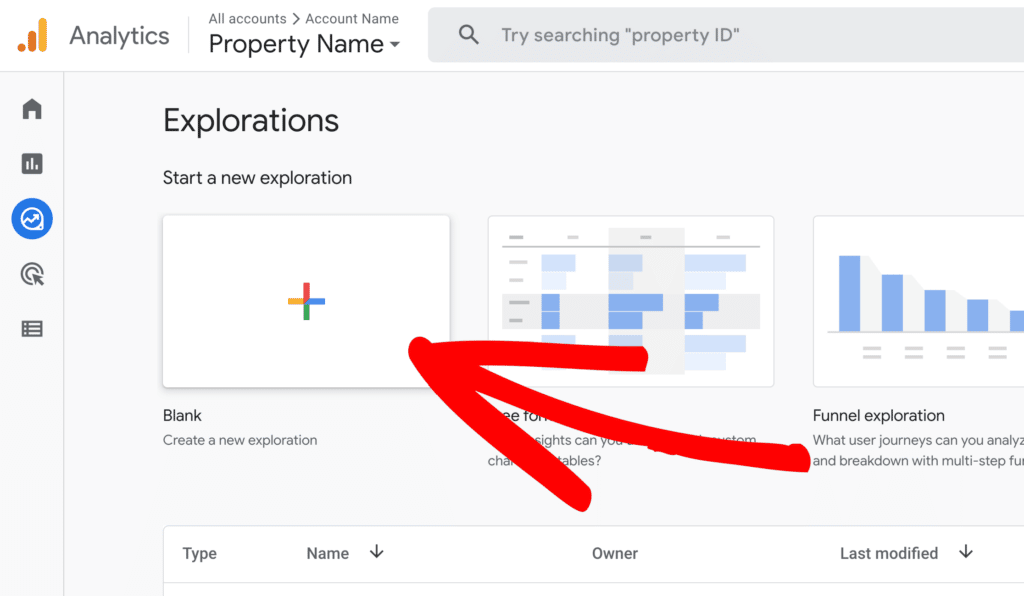
Name your report something that makes sense, and then add dimensions by clicking the plus sign in the Dimensions area.
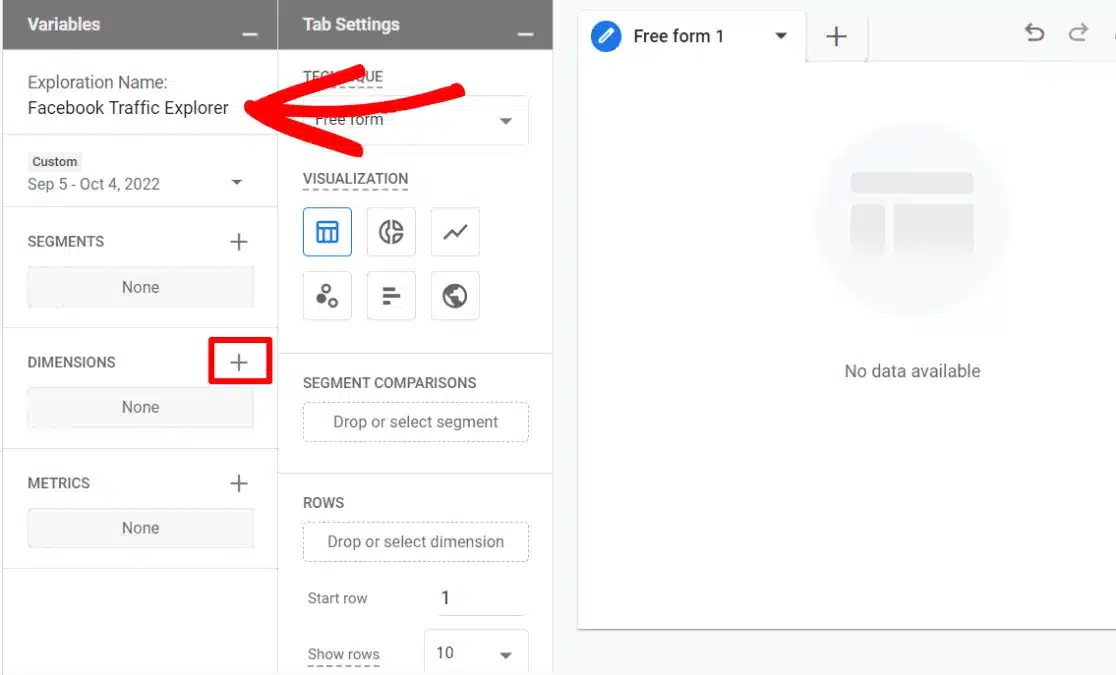
Search for and select the Session source and Landing page dimensions from the list.

Next, move on to adding metrics by clicking the plus sign in the Metrics area and selecting the following:
- Sessions
- Engaged sessions
- Engagement rate
- Average engagement time per session
- Key events (formerly called conversions)
- Revenue (for eCommerce stores)
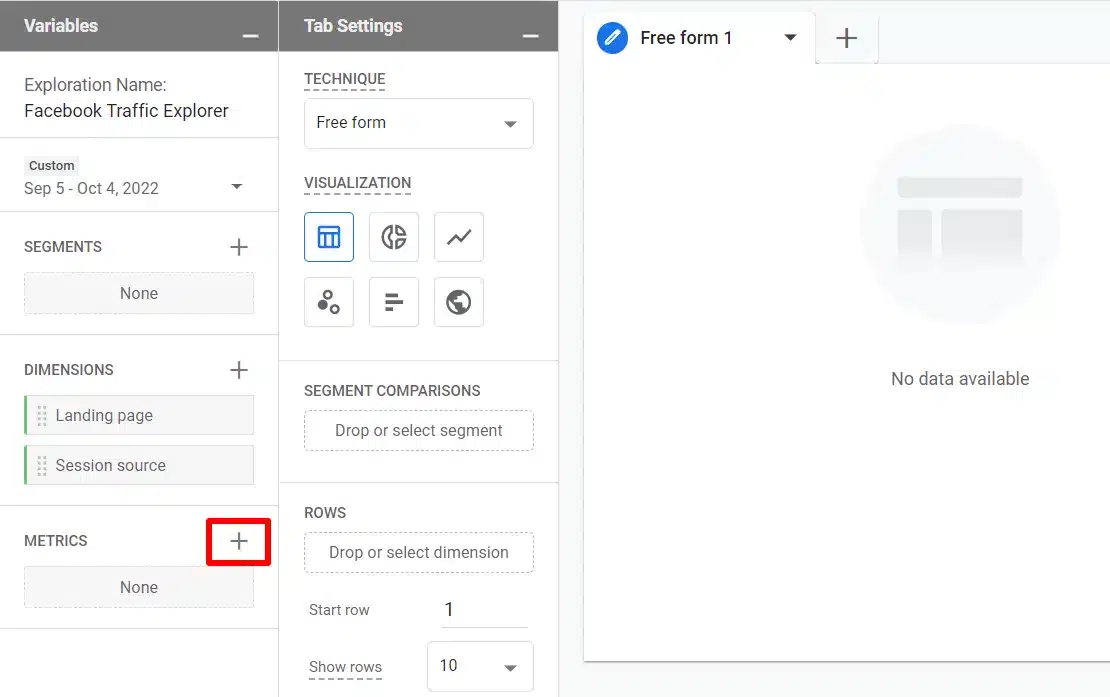
After selecting these metrics, drag the Landing page dimension into the Rows box. You can also use the Show rows drop-down to display more than the top 10 results.
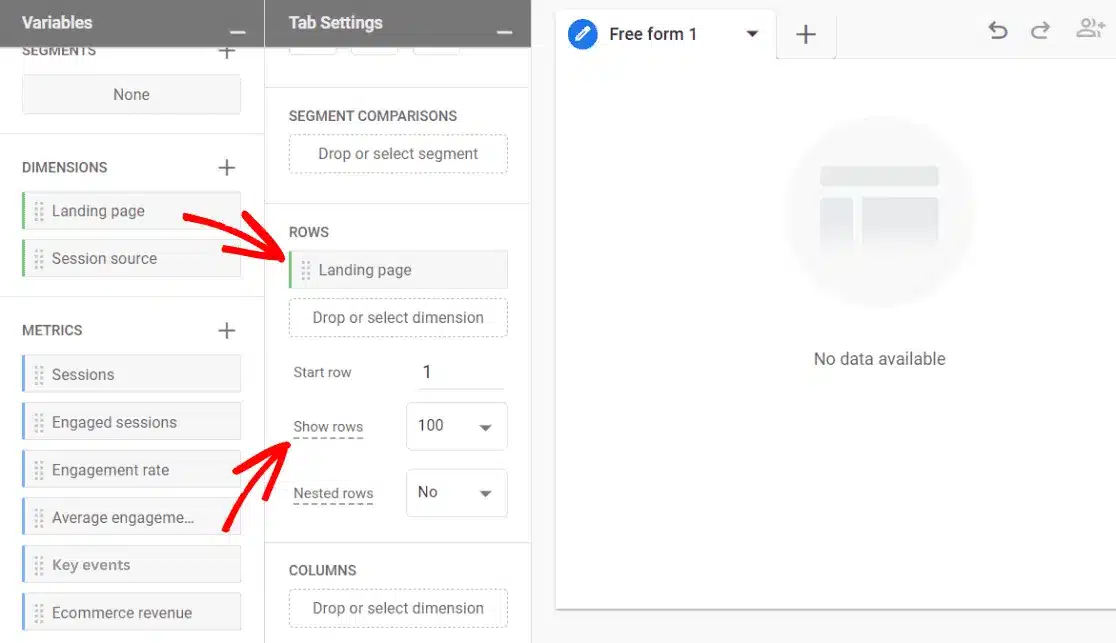
Then, drag all the selected metrics into the Values box.
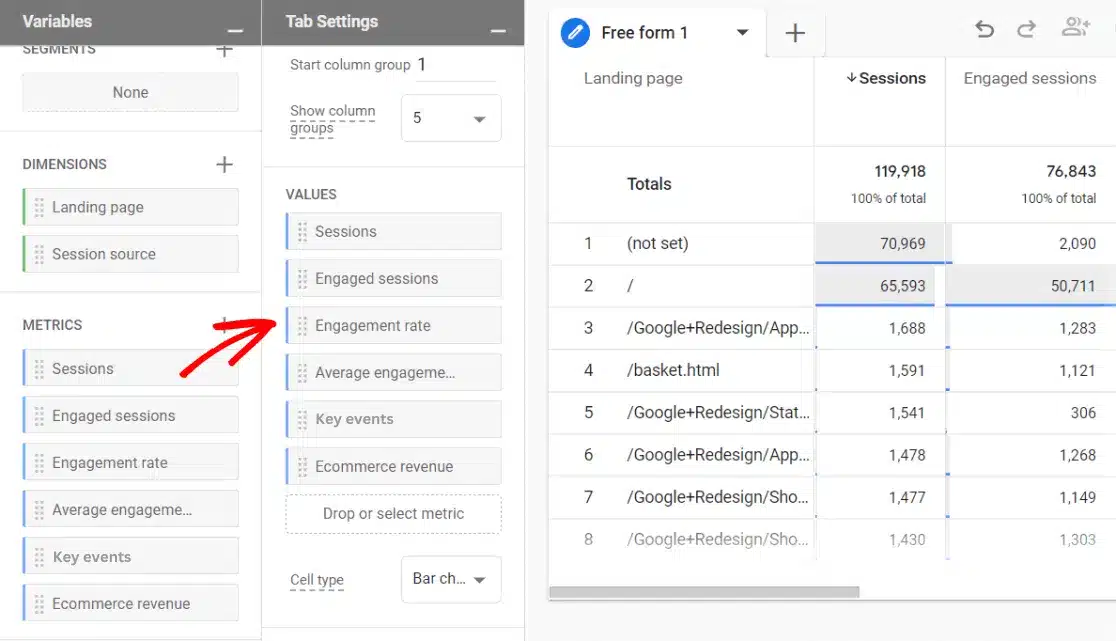
Lastly, drag Session source into the Filters box. From the dropdown menu, select contains and enter “facebook” before clicking Apply.
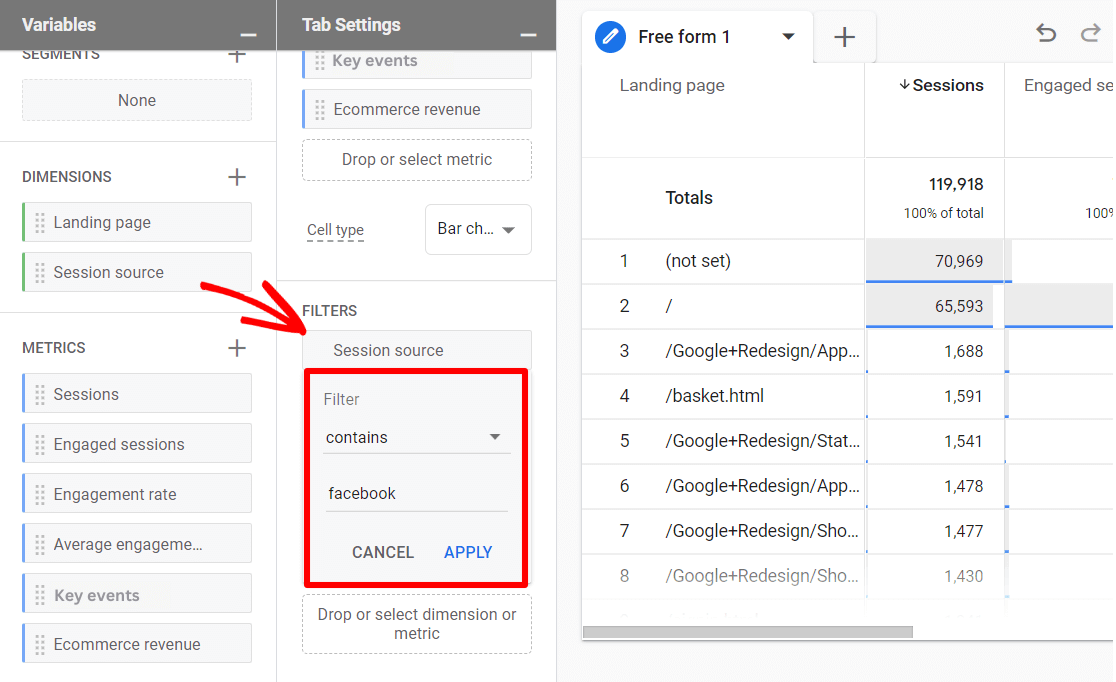
Now you have a complete Facebook traffic report:
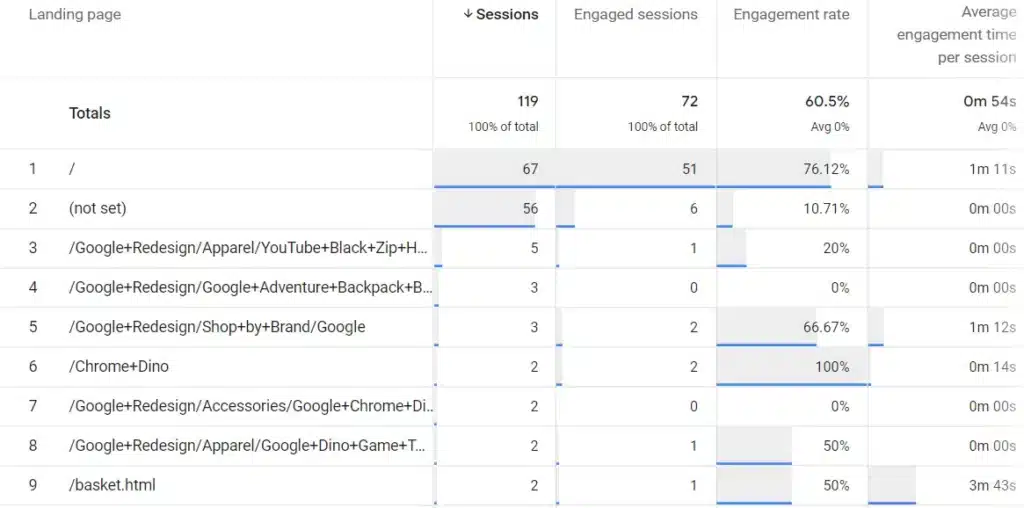
Because the report is completely customizable, you can include any data that is relevant to your website.
For instance, if you want to track whether visitors from Facebook are filling out your forms, you can add Event as a metric. Place it in the Values box and also drag it into Filters to specify the form event.
2. Use Campaigns
Campaigns are another cool way to organize your traffic in Google Analytics. To use campaigns, create a link with UTM parameters to share in your posts. These links look like this:
http://www.examplesite.com/new-blog-post/?utm_source=facebook&utm_medium=infographic_share&utm_campaign=q3_2024
Then, you can run reports in Google Analytics that include these parameters to categorize your traffic.
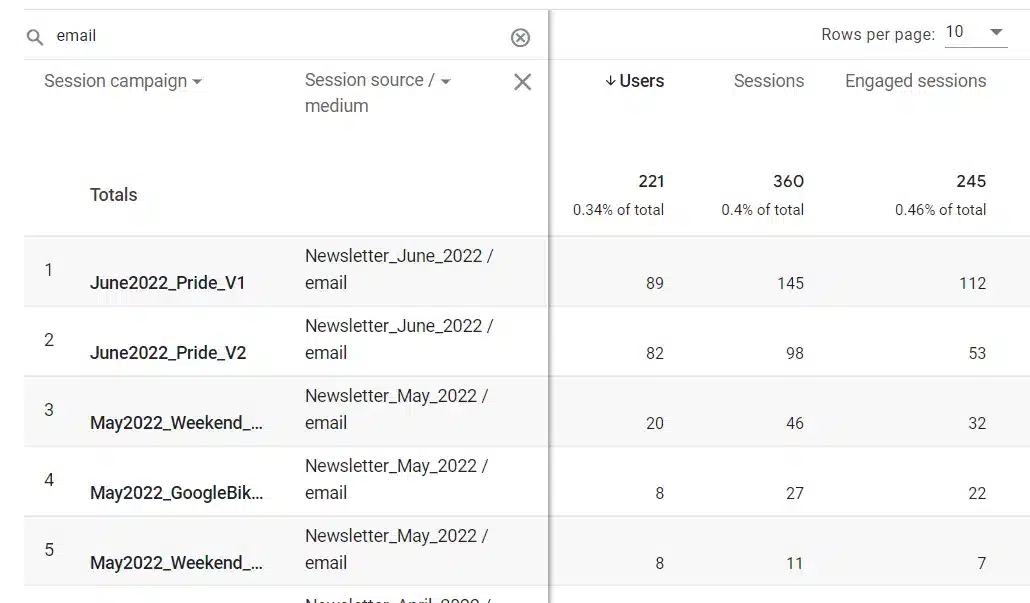
For more on using campaigns, check out our guide on GA4 UTM Parameters.
That’s it! We hope you liked our guide on how to connect Facebook to Google Analytics. Maybe you’d also like to read:
- 5 Best WordPress Facebook Pixel Plugins (Expert Pick)
- Best Way to Add a Facebook Pixel to WordPress (Step-By-Step)
- How to Use Google Analytics for Social Media Tracking
Not using ExactMetrics yet? Get started today!
And don’t forget to follow us on X and Facebook for more helpful Google Analytics and WordPress tutorials.

